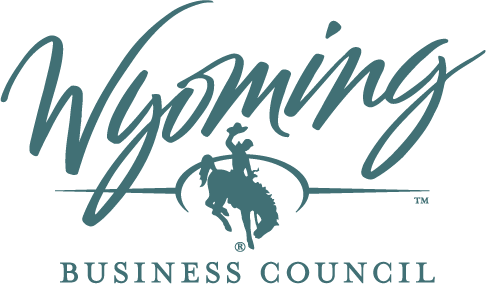Community Facility Rehabilitation
Schools to Community Centers
The Wyoming Business Council (WBC) has paused applications for the Community Facility Rehabilitation (CFR) Grant Program, a subcomponent of the Community Facilities Program (CFP) that was appropriated by the Wyoming Legislature during the 2023 General Session.
Because of the amount of interest in the program, the WBC will reevaluate the program to best serve Wyoming’s communities.
The Wyoming Business Council (WBC) has opened applications for the Community Facility Rehabilitation (CFR) Grant Program, a subcomponent of the Community Facilities Program (CFP) that was appropriated by the Wyoming Legislature during the 2024 Budget Session.
This program has an allocation of $2,800,000 to be expended as a grant(s) for cities and towns to complete the preservation of former school facilities as community centers, provided that the expenditure is for facilities that are included on the National Park Service’s National Register of Historic Places or as a National Historic Landmark in a a city or town with a population of less than 1500. Furthermore, applicants must be a city or town that has received funding or technical assistance from the WBC for the preservation of a former school facility as a community center prior to March 22, 2024.
Applicants must also be prepared to give a presentation to WBC Staff as part of the application process.
Cities and towns can apply now at: wbc.pub/CFR-Application
Applications will be accepted through June 15, 2024.

Requirements and Attachments Needed
Certified Cost Estimates
- Public Hearing & Minutes
- An applicant is required to inform and educate the public to the greatest extent possible about the proposed project utilizing a variety of techniques and media. To inform the public and to gather information, the public hearings should at a minimum: contain a comprehensive description of the proposed project; explore all possible funding sources and alternative solutions to the project; and solicit testimony from citizens.
- The applicant must make readily available to the public, access to the application and associated materials, exclusive of business plans or business financial information which are not subject to public information statutes.
- An applicant shall actively solicit citizen input which can be submitted via writing, electronically, or in person at a public hearing. A minimum of one public hearing before submission of an application. For the purposes of this program seven (7) days is the minimum period for notification of a hearing date. Public notice shall be published in an official medium such as local newspapers, public fora, local governmental social media pages or another venue as approved by the council staff. If the project facility is to be located outside the boundaries of the applicant, the applicant shall hold additional public hearings near the location of the proposed project facility.
- An applicant must use its best efforts to notify all providers of similar services in the market area about the public hearing at least seven (7) days in advance of the public hearing.
- The notice shall contain a concise description of the proposed project and state that time will be set-aside at the Public Hearing to take testimony from citizens about the project.
- An application must be accompanied by:
- a description of the applicant’s public engagement process
- written comments received by the applicant
- evidence of the public hearing notification
- minutes from the Public Hearing with any oral testimony
- Resolution
- Attach Resolution(s) of Support and minutes. After a public hearing is held, the applicant community must pass a Resolution of Support with verifying minutes.
- The Resolution should state, at a minimum:
- the nature of the project
- public benefit
- specified source of match funding by account name or other identifying characteristics
- who will be responsible in the case of project cost overruns
- who will be responsible for Operations and Maintenance
- Pictures/Map/Etc.
- Facility/Business Plan.
- Attach the complete community facility business plan. The business plan needs to include at a minimum:
- Executive Summary – one page summary of the entire business plan
- Financial projections – Provide financial projections for at least three (3) years outlining maintenance and operations costs. Provide a clear identification of funding sources to cover all projected maintenance and operational costs for at least three (3) years.
- Equipment – Description of the equipment necessary to operate and maintain the project facility.
- Equipment is an ineligible expense.
- Partners and Personnel – Description of the personnel and partners necessary to operate and maintain the project facility. Include the management experience of the personnel and partners.
- Marketing Plan – A project facility marketing plan which demonstrates knowledge of the market area, people to be served and marketing campaign.
- Performance Measures – Performance measures of desired outcomes, in the form of baselines or other evaluation criteria, which will address how well the project meets local community economic development or enhancement of quality-of-life goals.
- Attach the complete community facility business plan. The business plan needs to include at a minimum:
- Acknowledgement that the Wyoming Preference Act (Wyoming State Statute § 16-6-201 through 16-6-206) will be adhered to throughout the project.
- Must be signed by an Eligible Elected Official
- For additional information, please contact the Wyoming Workforce Services Labor Standards Office at: 307-777-7261. To view the actual statute, browse to Title 16, Chapter 6, Article 2 at the following link: https://advance.lexis.com
- Statement that the Applicant will Follow State Procurement Standards Inclusive of W.S. § 15-1-112 and W.S. § 16-6-101, et seq.
- Must be signed by an Eligible Elected Official
- Letter(s) of Support (optional)
- Relevant portions of local economic development plans (optional)
- Lease Agreement (optional/if applicable)
- Final draft or executed copy only. A signed lease agreement will be required if the applicant or CDO is leasing property as a part of this project.
- Contingency/Development Agreement (optional/if applicable)
- Final draft or executed copy only. The Contingency and Development Agreement between the applicant, the organization, and a Community Development Organization (if applicable), agreeing on the details of the project and responsibilities of each party; it should address:
- The project
- Public benefit to be derived by the project
- Specified source of match funding by account name or other identifying characteristics
- What will happen in the case of project cost over runs
- Private investment
- Public procurement
- Performance measures and reporting
- Timelines
- Responsibilities of each party
- Operations and Maintenance, if not included in another document
- Default remedies
- Etc.
- Final draft or executed copy only. The Contingency and Development Agreement between the applicant, the organization, and a Community Development Organization (if applicable), agreeing on the details of the project and responsibilities of each party; it should address:
- Certification of Incorporation (optional/if applicable)
- If the project involves a Community Development Organization or Economic Development Organization, the applicant must provide a Certification of Incorporation.
- Historical Use Documentation
- The facility must be included on the National Park Service’s National Register of Historic Places or as a National Historic Landmark.
TIP: Ensure you save the link of your application each time in order to return to your work in progress.
